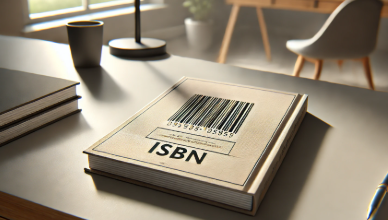In the rapidly evolving world of book publishing, authors are presented with two primary pathways to bring their works to readers: traditional publishing and self-publishing. Traditional publishing involves a long-established process where authors submit their manuscripts to publishing houses. These entities take on the financial risk, editorial control, and marketing efforts, but in return, they also hold significant sway over the creative and distribution aspects of the book.
A well-designed book cover is a critical marketing tool in this process, serving as a compelling visual representation that must intrigue readers, align with genre expectations, and be crafted by professional designers to ensure smooth publishing on platforms like Amazon and Ingram Spark. This path can offer prestige and wide distribution but often comes with challenging barriers to entry and a loss of some creative control.
On the other hand, self-publishing empowers authors to take full control of their publishing journey. By bypassing the gatekeepers of the traditional model, authors retain creative freedom, rights to their work, and potentially a larger share of the profits. Modern self-publishing platforms and companies offer a range of services, from basic print-on-demand to comprehensive packages that include professional editing, cover design, marketing, and distribution.
However, with this freedom comes the responsibility of making informed choices. Selecting the right self-publishing package is crucial as it can significantly influence the success of a book. The right package aligns with the author’s goals, budget, and vision, providing the necessary tools and support to transform a manuscript into a published book that reaches its intended audience. Understanding the nuances of each option and the implications they carry is essential for any author embarking on the self-publishing route.
Your Publishing Journey Awaits – Start NowUnderstanding Different Publishing Models
The publishing world is diverse, offering several models that cater to the varying needs and aspirations of authors. Understanding these models is key to choosing the path that best suits one’s publishing goals.
Traditional Publishing: This model has been the cornerstone of the book industry for centuries. In traditional publishing, large or specialized publishing houses select manuscripts they believe have commercial potential. Authors submit their works through literary agents who negotiate contracts on their behalf. The publisher assumes all financial risks, including costs for editing, designing, marketing, and distributing the book. In return, authors receive an advance and royalties, typically a smaller percentage of sales. The process can be lengthy and competitive, often requiring extensive revisions and a commitment to the publisher’s timeline and creative decisions.
Self-Publishing: A revolutionary shift in the industry, self-publishing puts the control back into the hands of authors. Utilizing platforms like Kindle Direct Publishing, Smashwords, or companies dedicated to self-publishing services, authors can bypass traditional gatekeepers. This model allows for complete creative freedom, from writing to cover design and marketing. Authors bear the initial costs but also retain higher royalties and rights to their work.
This model is particularly appealing for its speed to market and for authors who wish to explore niche markets or maintain total control over their work. Compared to working with a traditional publisher, self-publishing offers authors more control over their work, a potentially higher financial reward due to less financial risk upfront, and more direct involvement in quality control processes.
Hybrid Publishing: This model blends elements of traditional and self-publishing. Hybrid publishers offer services similar to traditional publishers but require authors to invest in the production costs. In return, authors receive higher royalties than traditional deals and maintain some level of creative control. This model suits authors looking for professional support without relinquishing all rights or profits.
Vanity Publishing: Often confused with self-publishing, vanity publishing involves a company charging authors to publish their work, offering minimal or no support in editing, marketing, or distribution. Authors should approach these publishers with caution, as the primary interest of vanity publishers is the fee from the author, not the book’s success in the market.
Each publishing model offers unique advantages and challenges, making it essential for authors to carefully assess their personal goals, budget, and desired level of involvement in the publishing process before making a decision.
The Role of Self-Publishing Companies
Self-publishing companies, as professional service providers, play a pivotal role in democratizing the publishing process by offering a variety of services that assist authors with publishing, marketing, and distributing their books. These companies provide a suite of tools including professional editing, cover design, formatting, ISBN assignment, and marketing assistance. Additionally, they facilitate distribution to major online retailers and print-on-demand services, ensuring that authors’ books reach a global audience without the need for large upfront print runs.
Unlike large publishing houses, which select manuscripts based on market potential and control most aspects of the publishing process, self-publishing companies allow authors to retain full creative control and rights over their work. While authors incur the initial costs of these services, they also benefit from higher royalty rates and quicker turnaround times, making self-publishing an attractive option for many aspiring and established writers.
Choosing the Right Self-Publishing Platform
Selecting the right self-publishing platform is a critical decision that can significantly impact the success and reach of an author’s book. One of the most popular and influential platforms is Kindle Direct Publishing (KDP), an Amazon service that enables authors to publish both eBooks and print books. KDP offers global distribution, allowing authors to reach millions of readers worldwide. The platform is user-friendly, provides real-time sales data, and offers up to 70% royalties on eBook sales in certain markets, making it an attractive option for many writers. Authors looking to self-publish have various avenues to explore, including leveraging platforms like KDP that simplify the publishing process.
Beyond KDP, there are dedicated self-publishing services that cater to authors looking for more personalized support and expanded services. These platforms often offer comprehensive packages that include professional editing, bespoke cover design, targeted marketing strategies, and distribution across multiple channels, including brick-and-mortar bookstores. The benefits of these dedicated services include a higher level of customization, the expertise of industry professionals, and additional promotional opportunities that can enhance an author’s visibility and sales potential.
Choosing the right platform involves weighing the ease of use and broad reach of services like KDP against the tailored support and comprehensive offerings of dedicated self-publishing companies. Authors should consider their specific needs, goals, and budget when making this important decision.
Spines Publishing Platform
Self-publishing with Spines is the premier choice for modern authors, offering a streamlined and intuitive platform that takes your book from manuscript to global readers effortlessly. Combining human expertise and AI technology, Spines makes every aspect of publishing accessible, even for newcomers. The process begins with a user-friendly manuscript upload, securing your work with immediate copyright protection. Spines’ AI-powered cover generator allows you to design a professional-looking cover without any technical skills.
The platform’s AI scans your manuscript for grammatical errors, and professional proofreading services are available for those seeking a thorough review. Customizable formatting options enhance your book’s interior, allowing you to choose typesetting, physical attributes, and contributors. For those interested in audiobooks, Spines offers advanced AI technology to create an audiobook in your chosen voice, expanding your book’s reach to audio enthusiasts.
Once the digital setup is complete, you can order physical or digital copies of your book, and Spines handles all production details. The final step is global distribution, where Spines optimizes your book’s metadata to ensure it reaches a wide array of distribution channels, including major retailers like Amazon and Barnes & Noble. This extensive reach is crucial for attracting a diverse readership and achieving literary success.
By guiding you through each step with advanced tools and professional support, Spines turns the complex process of publishing into a manageable and rewarding journey, allowing you to focus on your writing while they handle the logistics of becoming a published author.
Your Publishing Journey Awaits – Start NowAssessing Your Publishing Needs
Before embarking on the self-publishing journey, authors must clearly define their goals and identify their target audience. Understanding whether the primary objective is to reach a specific niche, maximize profits, or simply share a story widely helps tailor the publishing strategy effectively. This involves analyzing the interests, demographics, and reading preferences of the intended audience to ensure that the content resonates and is accessible to them.
Additionally, authors must decide on the format of their book. Print books offer the tactile experience many readers cherish, while eBooks provide convenience and global accessibility at a lower cost. Audiobooks cater to the growing demand for hands-free, on-the-go reading experiences. Each format has its own production requirements, costs, and distribution channels, and the choice should align with the author’s goals and the preferences of their target audience. Balancing these factors is key to a successful self-publishing endeavor.
Cover Design Importance
The adage “don’t judge a book by its cover” doesn’t hold true in the publishing industry, where a compelling, intriguing book cover that is well-aligned with the genre and reader expectations plays a crucial role in attracting potential readers. A professionally designed cover, crafted by a professional cover designer, can significantly boost book sales by capturing attention, conveying the genre and tone of the book, and making a strong first impression. It serves as the primary marketing tool on bookshelves and online listings, such as Amazon and Ingram Spark, where it must stand out among countless others.
Choosing the right cover designer is essential. Authors should seek a designer with experience in their genre, as this ensures the cover resonates with the target audience. Reviewing portfolios and seeking recommendations can help find a designer who aligns with the author’s vision. A good cover designer not only creates an aesthetically pleasing cover but also understands market trends and reader preferences, enhancing the book’s appeal and increasing its commercial potential.
Professional Editing and Proofreading
Professional editing and proofreading are indispensable in the journey to publishing a successful book. Editors do much more than correct grammatical errors and typos; they enhance the clarity, flow, and coherence of the text, ensuring that the narrative is engaging and understandable. Their expertise helps refine character development, plot structure, and pacing, making the story more compelling and immersive for readers.
The impact of professional editing on publishing success cannot be overstated. A well-edited book reflects the author’s dedication to quality and increases its credibility among readers and critics alike. It prevents distracting errors and inconsistencies that can detract from the reader’s experience and potentially harm reviews and sales. Moreover, in a market saturated with self-published titles, a professionally edited book stands out, signaling to readers, reviewers, and booksellers that it is a serious, polished work.
Ultimately, investing in professional editing and proofreading is an investment in the book’s potential. It not only enhances the quality of the manuscript but also boosts the author’s confidence in their work, paving the way for a more successful and satisfying publishing experience.
The Marketing and Distribution Plan
Developing a robust marketing strategy is vital for self-published authors who often lack the extensive network and promotional machinery of large publishing houses. A successful marketing plan starts with understanding the target audience’s preferences and behaviors and then tailoring tactics to engage them effectively. This includes creating a compelling book description, optimizing the book’s metadata for search engines, and leveraging social media platforms to build anticipation and connect with potential readers. Achieving self-publishing success requires a comprehensive understanding of these strategies to create a high-quality book that resonates with readers.
Content marketing, such as blogging, guest posts, and interviews, can provide valuable exposure, while email marketing campaigns help maintain interest and encourage word-of-mouth promotion. Additionally, securing reviews from bloggers, influencers, and readers can significantly boost credibility and visibility.
When it comes to distribution, choosing the right services from self-publishing platforms is crucial. Many platforms offer tiered marketing services, ranging from basic listings in their online stores to full promotional packages that include features like press releases, targeted ads, and participation in book fairs. Authors should assess these options based on their budget and the expected return on investment.
Direct engagement strategies, like book signings, webinars, and virtual book tours, can also play an essential role in a comprehensive marketing plan. For broader reach, authors should ensure their books are available in multiple formats (print, eBook, audiobook) and distributed through various channels, including online retailers and print-on-demand services, to maximize accessibility and sales opportunities.
Ultimately, the effectiveness of a marketing and distribution plan hinges on its adaptability. Authors should be prepared to adjust their strategies in response to reader feedback and market trends, continually refining their approach to sustain and grow their book’s presence in a competitive landscape.
Understanding Print-on-Demand
Print on demand (POD) is a transformative technology in the self-publishing world, allowing authors to print books only when there is an order, rather than investing in large, upfront print runs. This model works by connecting digital printing technology with distribution channels. When a customer orders a book, the POD service prints binds, and ships the book directly to the customer, minimizing the need for inventory and reducing the financial risk for the author.
For self-published authors, the benefits of POD are significant. It enables them to publish without the prohibitive costs of traditional printing, making book production accessible even to those with limited budgets. POD also offers flexibility in updating content, as authors can revise and republish their work without discarding unsold copies. Moreover, this model supports global distribution, as books can be printed closer to the customer, speeding up delivery and reducing shipping costs. This efficiency and scalability make POD an ideal choice for authors seeking to maximize their reach and profitability with minimal upfront investment.
Financial Considerations
Navigating the financial landscape of self-publishing is crucial for authors to manage risk and maximize returns. Self-publishing packages vary widely in cost, depending on the range of services included such as professional editing, cover design, marketing, and distribution. Basic packages might start from a few hundred dollars, while comprehensive services can climb into the thousands, especially if extensive marketing and global distribution are involved.
To manage financial risk, authors should carefully evaluate which services are essential for their book’s success and align with their budget. It’s important to prioritize investments that offer the highest return, such as professional editing and an attractive cover design, which significantly influence a book’s marketability. Additionally, leveraging cost-effective strategies like print-on-demand can minimize upfront expenses and avoid the financial burden of unsold inventory. By making informed decisions and balancing costs with potential benefits, authors can navigate the financial aspects of self-publishing more effectively.
Selecting Publishing Services
Choosing the right self-publishing service is a critical step for self-published authors, as these decisions directly impact the quality and reach of their work. Among the plethora of services available, two essential ones are the use of beta readers and the engagement of professional services like editing, design, and marketing.
Beta Readers: Beta readers play a vital role early in the publishing process. They are typically readers from the author’s target audience who review the manuscript before it undergoes professional editing. Their feedback is invaluable for identifying issues with plot, character development, pacing, and overall reader engagement. By incorporating insights from beta readers, authors can refine their work, making it more resonant and polished. This feedback loop helps ensure the manuscript is well-received by its intended audience, reducing the risk of negative reviews post-publication.
Professional Services: After incorporating feedback from beta readers, authors move to professional services that elevate the manuscript to publishable quality. Professional editing is indispensable, as it not only corrects grammatical errors but also enhances narrative structure and clarity. A professional cover designer creates a visually appealing cover that captures the essence of the book and attracts readers. Marketing professionals develop strategies tailored to the author’s audience, employing tools like social media campaigns, book trailers, and press releases to generate buzz and drive sales.
Integrating these services into the publishing process requires careful planning and coordination. Authors should sequence these steps logically: starting with beta readers for initial feedback, followed by professional editing to refine the content, and then cover design and marketing to prepare for launch. Each step builds upon the previous one, ensuring that by the time the book reaches the market, it is a well-crafted, compelling product that stands the best chance of success.
By judiciously selecting and utilizing these services, self-published authors can significantly enhance the appeal and professionalism of their books, making a strong impression in a competitive market.
Your Publishing Journey Awaits – Start NowFeedback and Beta Readers
Beta readers are a crucial asset in the self-publishing process, offering early insights into how a book resonates with its intended audience. These readers, often volunteers who are part of the target demographic, provide feedback on aspects like plot coherence, character development, and emotional impact. This early critique helps authors identify strengths and weaknesses in their manuscript, guiding necessary revisions to enhance the story’s appeal.
To integrate feedback effectively, authors should approach it with an open mind and a willingness to adapt. It’s important to discern between subjective opinions and consistent patterns in feedback that highlight areas needing improvement. Authors should prioritize changes that align with their vision while addressing significant concerns raised by beta readers. Organizing feedback thematically and systematically addressing each point ensures that the integration process is thorough and enhances the overall quality of the book before it undergoes professional editing.
Building Your Brand as a Published Author
In today’s digital age, building a strong personal brand is essential for published authors to differentiate themselves and connect with their audience. Leveraging social media platforms is a key strategy in this endeavor. Platforms like Twitter, Instagram, Facebook, and LinkedIn provide authors with the opportunity to share behind-the-scenes content, updates on upcoming projects, and insights into their writing process. These platforms can also be used to host live Q&A sessions, book launches, and interactive discussions, making readers feel more involved and invested in the author’s journey.
Establishing a personal connection with readers goes beyond just social media presence. Authors should aim to create an authentic voice in their posts and communications, reflecting their unique personality and writing style. Engaging with readers by responding to comments, participating in online book clubs, and sending out personalized newsletters helps build a loyal community. This direct engagement not only fosters a deeper connection but also encourages word-of-mouth promotion, which is invaluable in expanding an author’s reach and influence.
By thoughtfully using social media and cultivating genuine interactions, authors can significantly enhance their brand, attract new readers, and maintain a vibrant, engaged community around their work.
Legal and Copyright Considerations
Understanding copyright laws is fundamental for authors to protect their intellectual property and ensure they receive due credit and compensation for their work. Copyright automatically applies to a literary work once it is fixed in a tangible form, providing authors exclusive rights to reproduce, distribute, perform, and display their work. Authors must be vigilant in enforcing these rights, especially in an era where digital content can easily be copied and distributed without permission.
Owning an International Standard Book Number (ISBN) is another critical aspect of the publishing process. An ISBN uniquely identifies a book and its edition, facilitating its tracking in sales and distribution networks. It is essential for selling in bookstores and online platforms. Securing an ISBN ensures the book is recognized in the global marketplace, enhancing its credibility and allowing accurate tracking of sales, which is vital for authors’ rights and royalties.
Leveraging Free Resources and Learning
Self-publishing involves a steep learning curve, but authors can significantly ease this journey by utilizing the myriad of free resources available. Numerous online platforms offer free guides, tutorials, and webinars on topics ranging from writing and editing to marketing and distribution. Websites like Writer’s Digest and Reedsy provide valuable insights and tools that can help authors navigate the complexities of self-publishing.
Additionally, online communities and forums are treasure troves of information, where experienced authors share their knowledge and offer support to newcomers. Engaging in these communities can lead to valuable advice on avoiding common pitfalls and optimizing the publishing process.
By taking advantage of these free resources, authors can build their knowledge base, improve their skills, and make informed decisions throughout their publishing journey. This proactive approach not only helps manage the learning curve but also enhances the overall quality and success of their self-published work.
Connecting with Independent Bookstores and Online Retailers
For self-published authors, getting their books into independent bookstores and working with online retailers are key strategies for expanding their reach. To approach independent bookstores, authors should focus on creating a compelling pitch that highlights the local appeal or unique aspects of their book. Building personal relationships with store owners and offering consignment arrangements can also facilitate placement on shelves. Events like book signings or readings can further enhance the bookstore partnership.
Working with online retailers involves understanding their specific requirements for listing books. Authors should ensure their books have proper metadata, including titles, descriptions, and keywords, to optimize discoverability. Utilizing platforms like Amazon’s Kindle Direct Publishing or IngramSpark can streamline distribution to a variety of online retailers. By maintaining a professional approach and leveraging the tools these platforms offer, authors can effectively manage their presence in the digital marketplace and attract a wider audience.
Evaluating Hybrid Publishers
Hybrid publishers blend elements of traditional and self-publishing, offering a middle ground for authors seeking professional support with more creative control. Unlike traditional publishers, which typically assume all costs and control over the publication process, hybrid publishers require authors to contribute financially to production costs. In return, authors often receive higher royalties and maintain a greater say in creative decisions such as cover design and marketing strategies.
Choosing the right hybrid publisher involves thorough research and vetting. Authors should examine the publisher’s track record, including the success of previously published titles and testimonials from other authors. It’s important to scrutinize the terms of the contract, focusing on rights retention, royalty rates, and the scope of services provided. Transparent communication about expectations and costs is essential to ensure the partnership aligns with the author’s goals and provides the desired level of support and expertise.
Your Publishing Journey Awaits – Start NowCase Studies of Successful Self-Published Authors
The landscape of self-publishing is dotted with stories of authors who turned their passion into success through strategic planning and hard work. These case studies highlight the journeys of authors who have mastered the art of self-publishing and the lessons they offer to aspiring writers.
E.L. James: Initially posting her work on a fan-fiction website, E.L. James’s “Fifty Shades of Grey” transformed from a simple online story into a global phenomenon through self-publishing. Her success underlines the importance of understanding audience demand and leveraging digital platforms for wide exposure. James’s use of existing fan bases and the power of viral marketing led to unprecedented sales, eventually attracting traditional publishers for subsequent editions.
Andy Weir: Author of “The Martian,” Andy Weir initially published his novel chapter by chapter on his personal blog, responding to reader feedback and adjusting the story accordingly. This iterative process not only refined the narrative but also built a devoted readership eager for more. When he finally self-published the complete book on Amazon, his established fan base propelled it to success, leading to a movie adaptation. Weir’s story demonstrates the value of community engagement and responsiveness to reader input.
Hugh Howey: Known for his “Wool” series, Hugh Howey epitomizes the strategic use of serialized content. By releasing his story in parts, Howey kept readers engaged and used their feedback to shape future installments. This approach ensured a steady stream of income and interest, eventually leading to a hybrid publishing deal. Howey’s method shows the effectiveness of serialization and the importance of adapting content based on audience reactions.
These authors exemplify different paths to success in self-publishing, highlighting key strategies such as leveraging digital platforms, engaging with readers, and using serialization to maintain interest. Their stories encourage aspiring authors to be proactive, adaptive, and strategic in their self-publishing endeavors.
Choosing Between Different Book Formats
When deciding between print and ebook formats, authors must weigh the pros and cons of each to determine which best suits their audience and goals.
Print Books: The tactile feel of a print book remains appealing to many readers who value the physical experience of reading. Print books can be more effective in local markets, bookstores, and for signings or events, offering a tangible product that can enhance perceived value. However, they require more upfront investment for printing and storage, and distribution can be more complex.
Ebooks: Ebooks offer convenience and accessibility, allowing readers to carry multiple titles on one device. They are cost-effective for authors to produce, as there are no printing costs, and distribution is simpler and global through platforms like Amazon and Apple Books. However, ebooks face challenges with digital piracy and can be less impactful in settings where physical presence matters.
Balancing these factors helps authors choose the format that aligns with their distribution strategy, target audience preferences, and budget considerations.
Planning Your Writing Process
The writing process profoundly influences an author’s publishing choices, shaping the timeline, format, and strategy for bringing their work to market. A well-structured writing process ensures that the manuscript is not only completed but also aligns with the chosen publishing route, whether traditional, self, or hybrid.
To ensure a smooth writing and publishing journey, authors should start by setting clear, achievable goals and deadlines to maintain momentum and focus. Regular writing habits and disciplined scheduling help in consistently advancing the manuscript. Utilizing writing tools and software can aid in organizing ideas, tracking progress, and formatting the text according to publishing standards.
Additionally, authors should be prepared for revisions and seek feedback early from trusted peers or beta readers. This iterative refining enhances the quality of the work and ensures it meets audience expectations, ultimately influencing the choice of publishing format and the success of the book in the market.
Exploring Partnership Publishing Options
Partnership publishing, often seen as a middle ground between traditional and self-publishing, involves a collaborative relationship between the author and the publisher. In this model, authors contribute financially to the production and marketing costs of their book, but they also benefit from the publisher’s professional expertise and distribution networks.
Unlike traditional publishing, where the publisher assumes all costs and controls most decisions, partnership publishing offers authors more input in creative processes and marketing strategies. They retain a higher percentage of royalties compared to traditional deals due to their initial financial contribution. In contrast to self-publishing, where the author is responsible for every aspect of the process, partnership publishing provides professional support, reducing the burden on the author and enhancing the book’s marketability.
This model is ideal for authors seeking a balance of professional guidance, creative control, and financial investment, making it a viable option for those looking to maximize their book’s potential while maintaining significant involvement in its journey.
Navigating the Publishing Industry
Understanding the publishing arm and industry dynamics is crucial for authors aiming to navigate the competitive landscape successfully. The publishing industry is multifaceted, encompassing traditional publishers, self-publishing platforms, hybrid models, and digital marketplaces. Each segment has its own norms, expectations, and opportunities.
To market successfully in this environment, authors must first identify their niche and target audience, tailoring their content and marketing strategies to meet these readers’ preferences. Building a strong author brand and online presence through social media, author websites, and blogging can significantly enhance visibility. Networking with industry professionals, attending literary events, and joining author communities are vital for gaining insights and promoting your work.
Moreover, staying informed about industry trends, such as the rise of audiobooks or the influence of digital marketing, allows authors to adapt their strategies and seize emerging opportunities, ensuring their work stands out in a crowded market.
Your Publishing Journey Awaits – Start NowPost-Publication: Maintaining Momentum
After a book is published, the challenge shifts to maintaining sales momentum and keeping the audience engaged. This phase is crucial for long-term success and requires strategic planning and consistent effort.
To sustain book sales, authors should diversify their marketing tactics over time. Continuous promotion through social media updates, email newsletters, and blog posts can keep the book in the public eye. Offering limited-time discounts, bundling books, or participating in book fairs and festivals can reinvigorate interest. Authors should also consider expanding into new markets by translating their books or adapting them into different formats like audiobooks or interactive eBooks.
Engaging with the audience post-launch is equally important. Responding to reader feedback, comments, and reviews builds a community around the book and fosters loyalty. Hosting Q&A sessions, virtual meetups, or live readings can deepen connections with readers. Encouraging user-generated content, such as fan art or reviews, and featuring it on personal platforms can create a vibrant, interactive fan base.
By continuously marketing the book and nurturing the relationship with their audience, authors can ensure their work remains relevant and continues to reach new readers long after the initial launch.
Conclusion
Choosing the right self-publishing package is a pivotal decision that can shape the success of your book. By understanding the differences between traditional, hybrid, and self-publishing models, you can select a path that aligns with your creative vision and financial goals. Embracing professional services such as editing, cover design, and marketing is essential to enhance the appeal and reach of your work. Leveraging tools like print-on-demand and digital platforms can optimize distribution and minimize financial risks.
As you embark on your self-publishing journey, remember that your dedication to learning and adapting is key to navigating this dynamic industry. Engage with your audience, continuously market your book, and stay informed about industry trends to maintain momentum. With the right approach and a commitment to your craft, the self-publishing route offers a rewarding path to sharing your story with the world.







